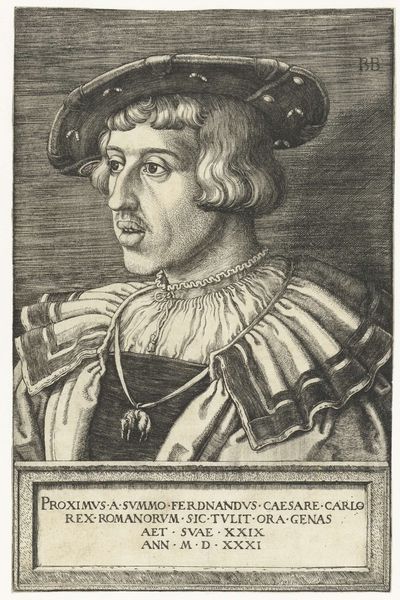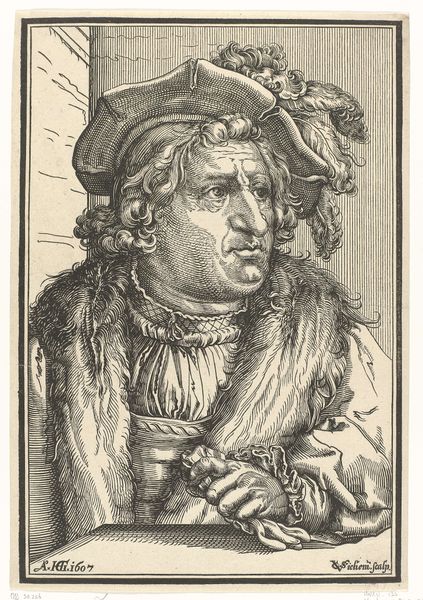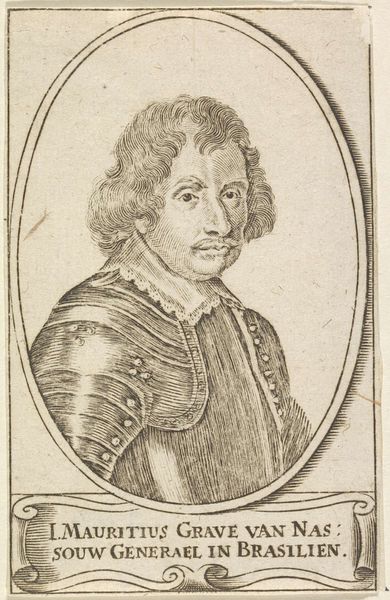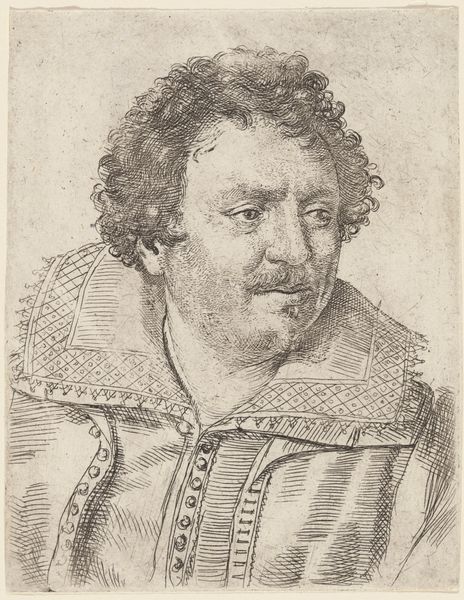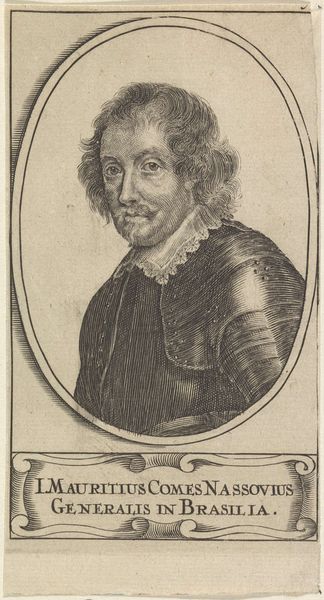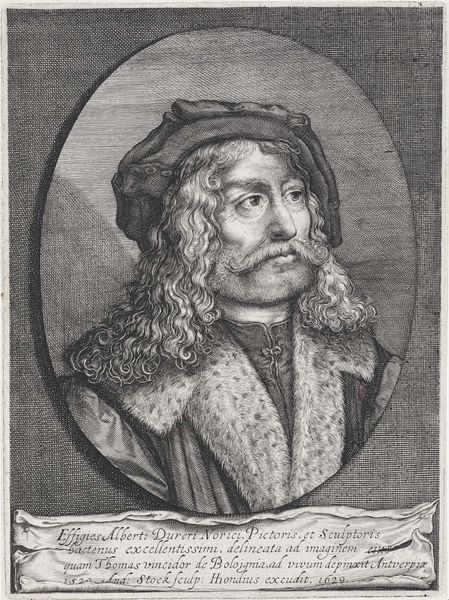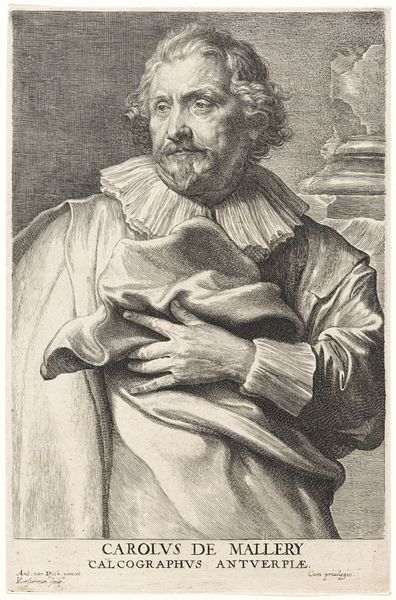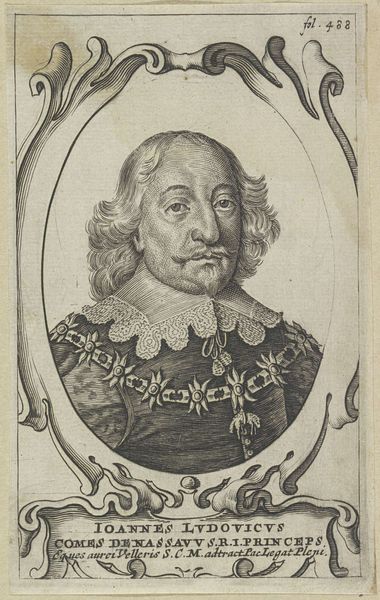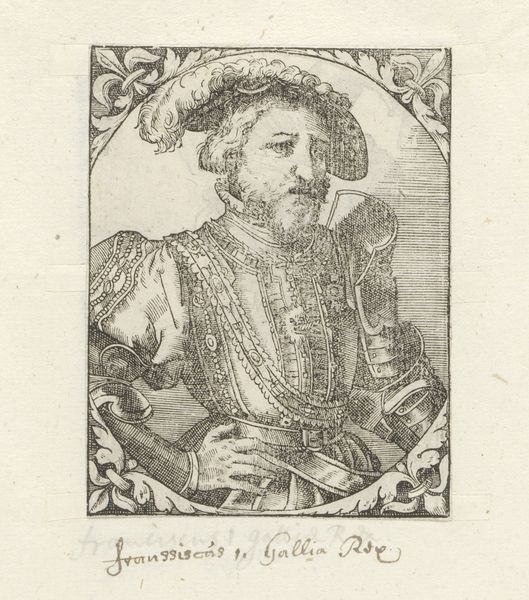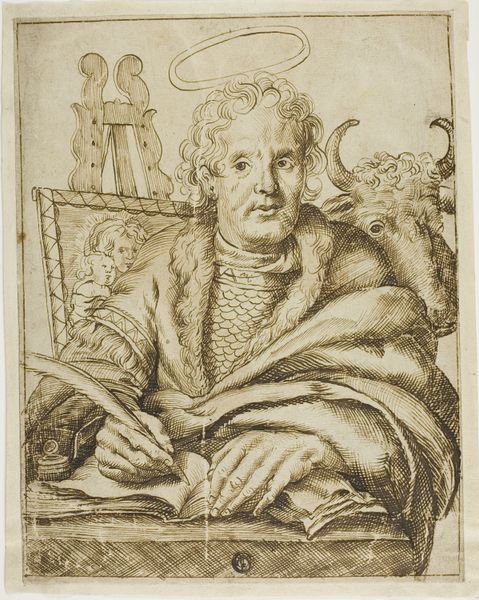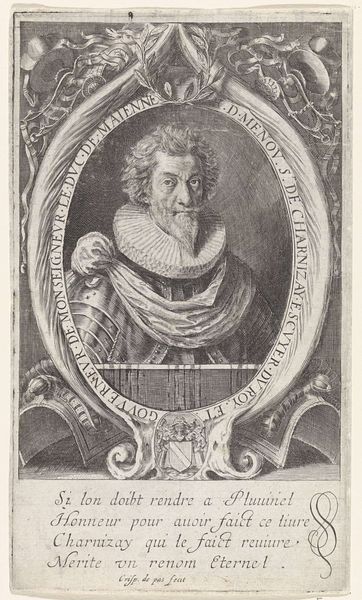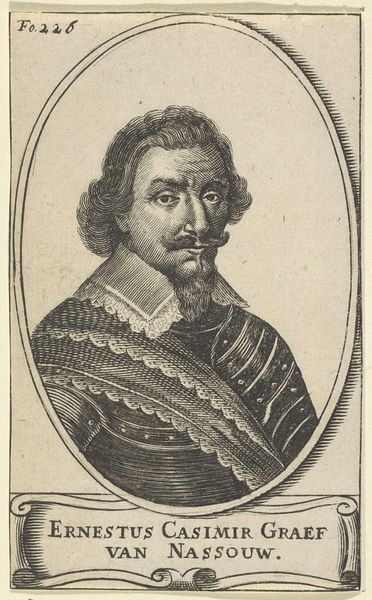
print, engraving
#
portrait
# print
#
mannerism
#
northern-renaissance
#
engraving
Dimensions: height 217 mm, width 146 mm
Copyright: Rijks Museum: Open Domain
Editor: This is "Portret van Gillis van Breen" created between 1586 and 1590 by Hendrick Goltzius. It’s an engraving, a print. The intricate lines create so much texture, and the ruffled collar is really catching my eye. What symbols or meanings can you draw from this portrait? Curator: The collar immediately speaks of status, but notice how Goltzius renders it with a sharp, almost aggressive line. The ruff, while signifying societal position, seems to cage the sitter's head. The wild hair too defies expectations of neat Renaissance portraiture; here is controlled chaos, reflecting a restless intellectual spirit. The portrait then moves beyond the literal and the individual. Can we find in it some element of Mannerist unease? Editor: So, it’s not just about showing who this man *is* but hinting at his inner state? That makes sense, given how intense his gaze is. It almost feels psychological. Curator: Exactly. The Northern Renaissance, steeped in religious reform, saw a rise in introspection, as if peering through the surface to a deeper, spiritual truth. Consider also how printmaking itself made images accessible and helped circulate these ideas widely. Editor: Interesting, I hadn't considered the impact of the medium itself. It's amazing how many layers are woven into this one image! I'm so curious to know what Gillis van Breen was like as an individual! Curator: The enigma is perhaps more fascinating than what a name and a date might imply. That play of public image and private feeling gives it lasting appeal, a key concern to early moderns undergoing immense social and political change. It really embodies the era, doesn't it?
Comments
No comments
Be the first to comment and join the conversation on the ultimate creative platform.

